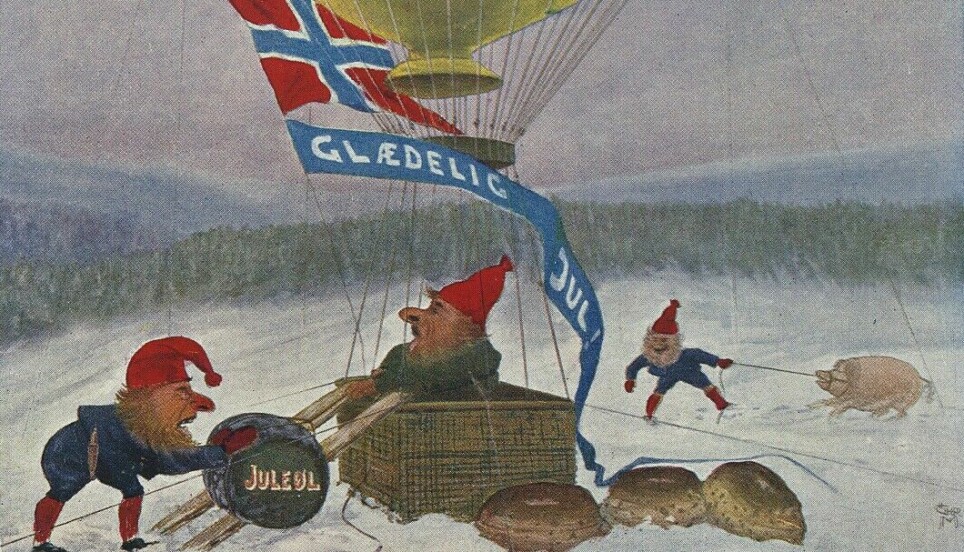
Christmas cards haven't always been cute. Rowdy, drunk Christmas gnomes were a popular motif back in the day.
“Some of the early Christmas cards are quite a bit darker than what we’re used to today,” says research librarian at the National Library in Norway.
A Nordic Christmas gnome – a fjøsnisse – and his wife is drinking Christmas beer and dancing while their pig is up on the roof. Or a Christmas gnome is sat with an empty bottle in his lap, an expression on his face as if he has a massive headache, while another Christmas gnome next to him is dead drunk, lying on his belly.
This is what a Christmas card from the end of the 1800s and up until the 1950s could very well look like.
“The Christmas gnome cards are the earliest Norwegian Christmas cards that we know about”, says Guro Tangvald, research librarian at the National Library in Norway. The library has a large collection of old Christmas cards.
There were two different types of gnomes. Some cards had illustrations of the American Santa, or rather, the German Santa, which is where he was from before the Coca-Cola commercials claimed him as American.
But most of the Norwegian cards have the fjøsnisse – which directly translates as a barn gnome, here referred to as a Christmas gnome. These gnomes were not necessarily sweet or kind.
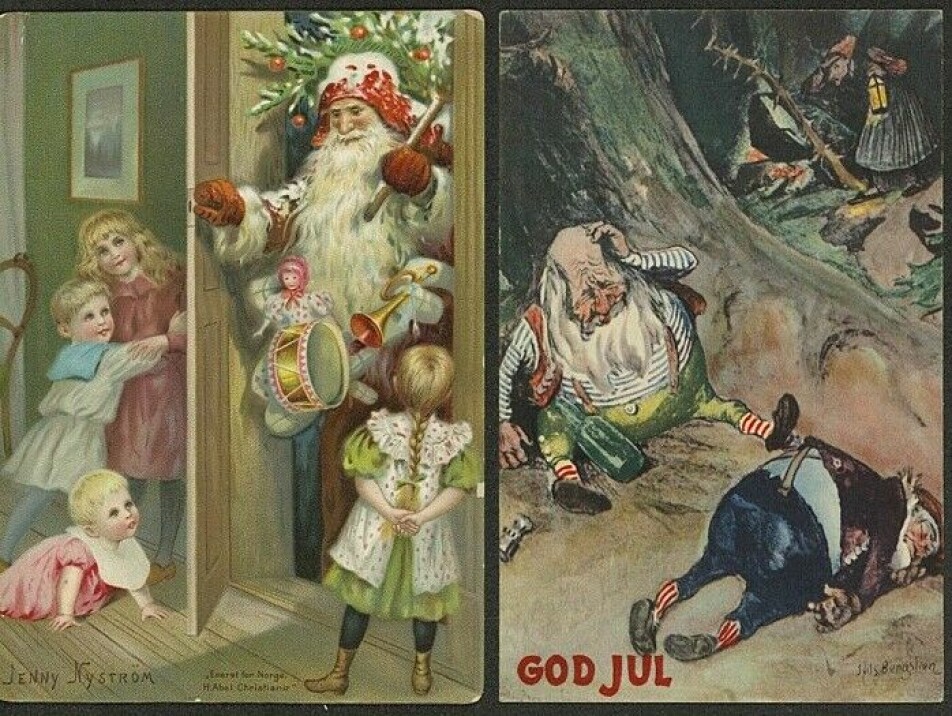
Nice, grotesque or sad
The motifs on the cards can for instance show Christmas gnomes that party and fight, Tangvald says.
“Some of the drunk gnomes are quite nice and cosy, while other illustrators made them appear more grotesque. There is a series of cards that show how a group of gnomes go get a pig, cut it in pieces and get it on a plate,” she says.
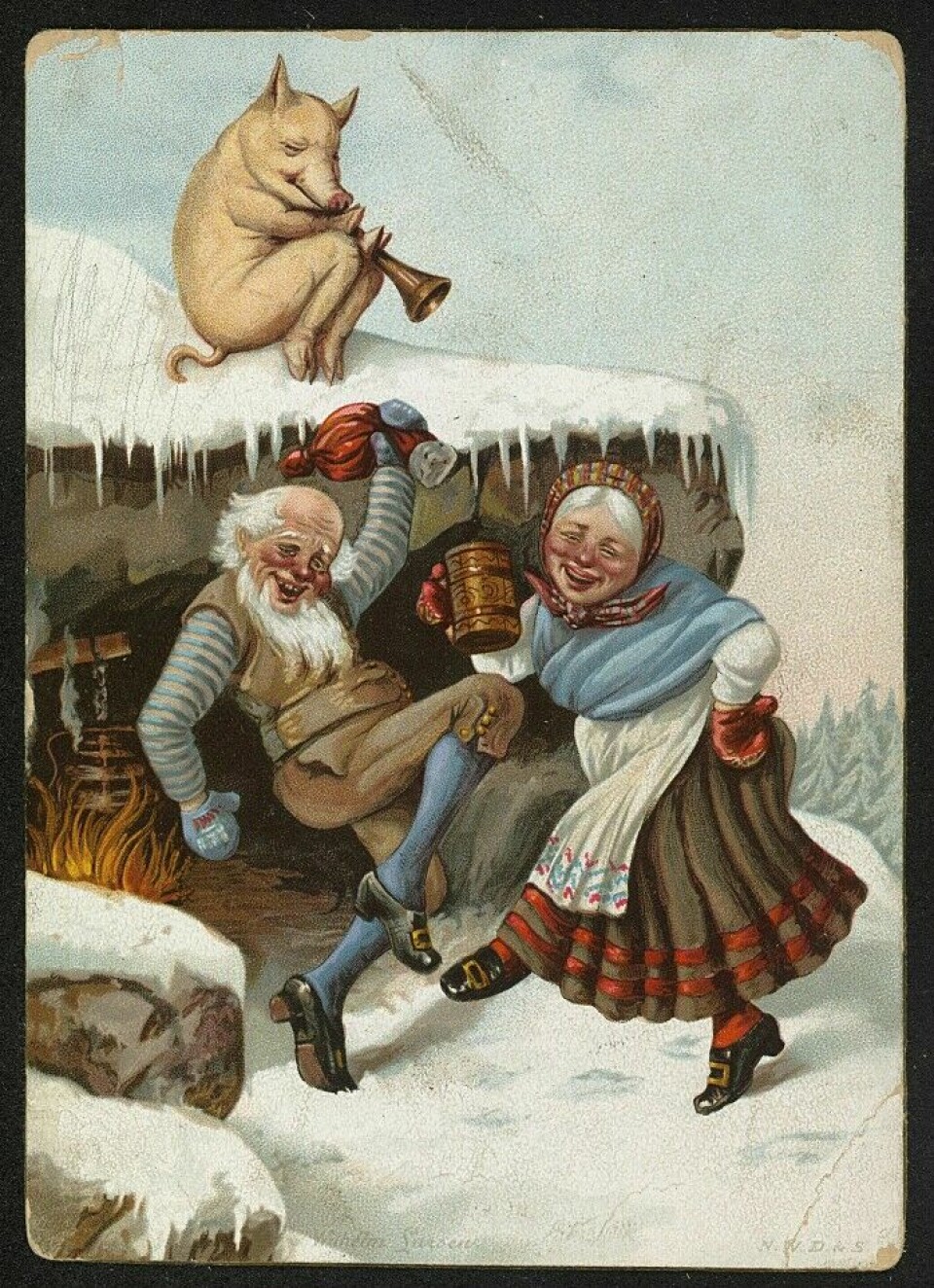
Other motifs were more sad, like the image of a Christmas gnome who has fallen asleep next to his bowl of porridge.
“He looks really lonely,” Tangvald says.
“Some of the earlier Christmas cards are quite a bit darker than what we’re used to today,” she says.
But the Christmas gnome wasn’t the only popular figure to grace Christmas cards back in the day.
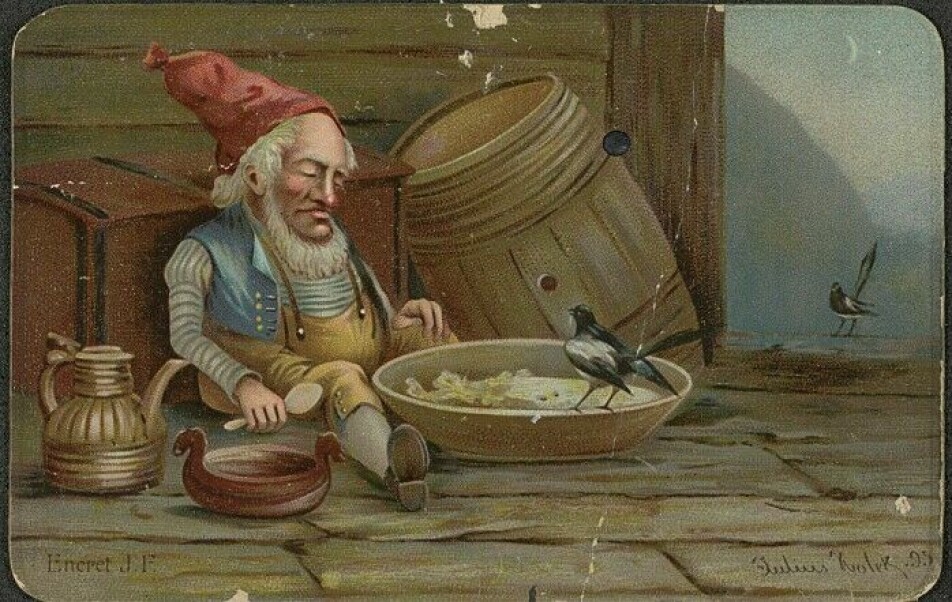

Albums for collecting postcards
The first Christmas cards were handover greeting cards.
They were printed on a carton that was about twice as thick as today’s postcards. If they were to be sent via mail they had to be put in an envelope.
The thin postcard, where the stamp and address go on the card itself, only came on the market around 1900. This was the start of the golden age of postcards, which lasted until 1920.
“The use of these cards exploded in Europe. Postcards became a collector’s item and people had special postcard albums,” says the research librarian.
This was also true for Christmas cards.
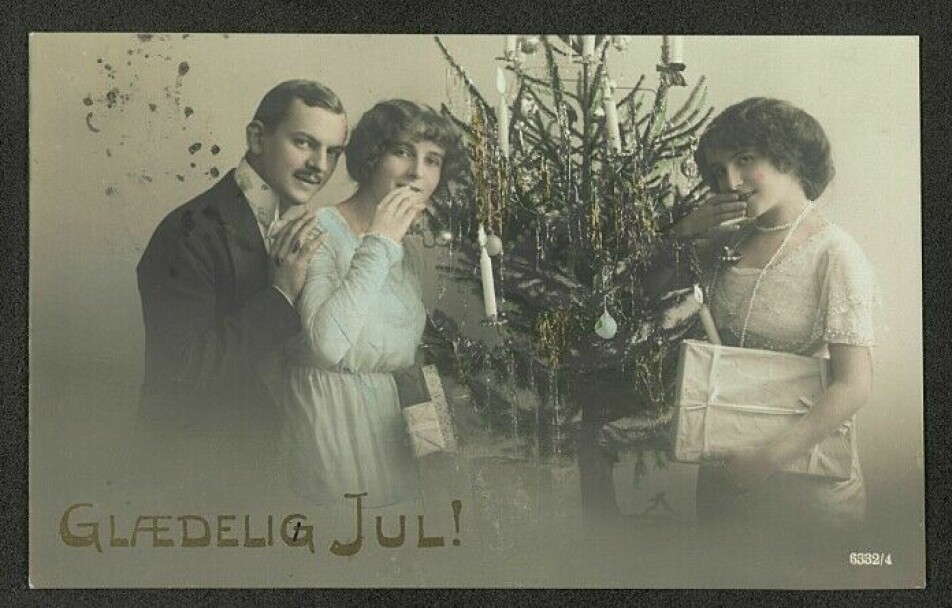
Glamorous photos of random children and adults
Many Christmas cards from this time reflect the trend for postcards at the time: Glamourous photos of random people.
“They are called glamour cards and often show women and children in soft lighting. These were often imported from Germany, France and the UK,” Tangvald explains.
The Christmas card variant of these cards was typically adults and children all dressed up in front of a Christmas tree, or a beautiful family opening Christmas gifts.
Instead of sending Christmas cards with nice photos of themselves and their children, as many of us do today, people would rather send each other photos of glamorous people they did not know.
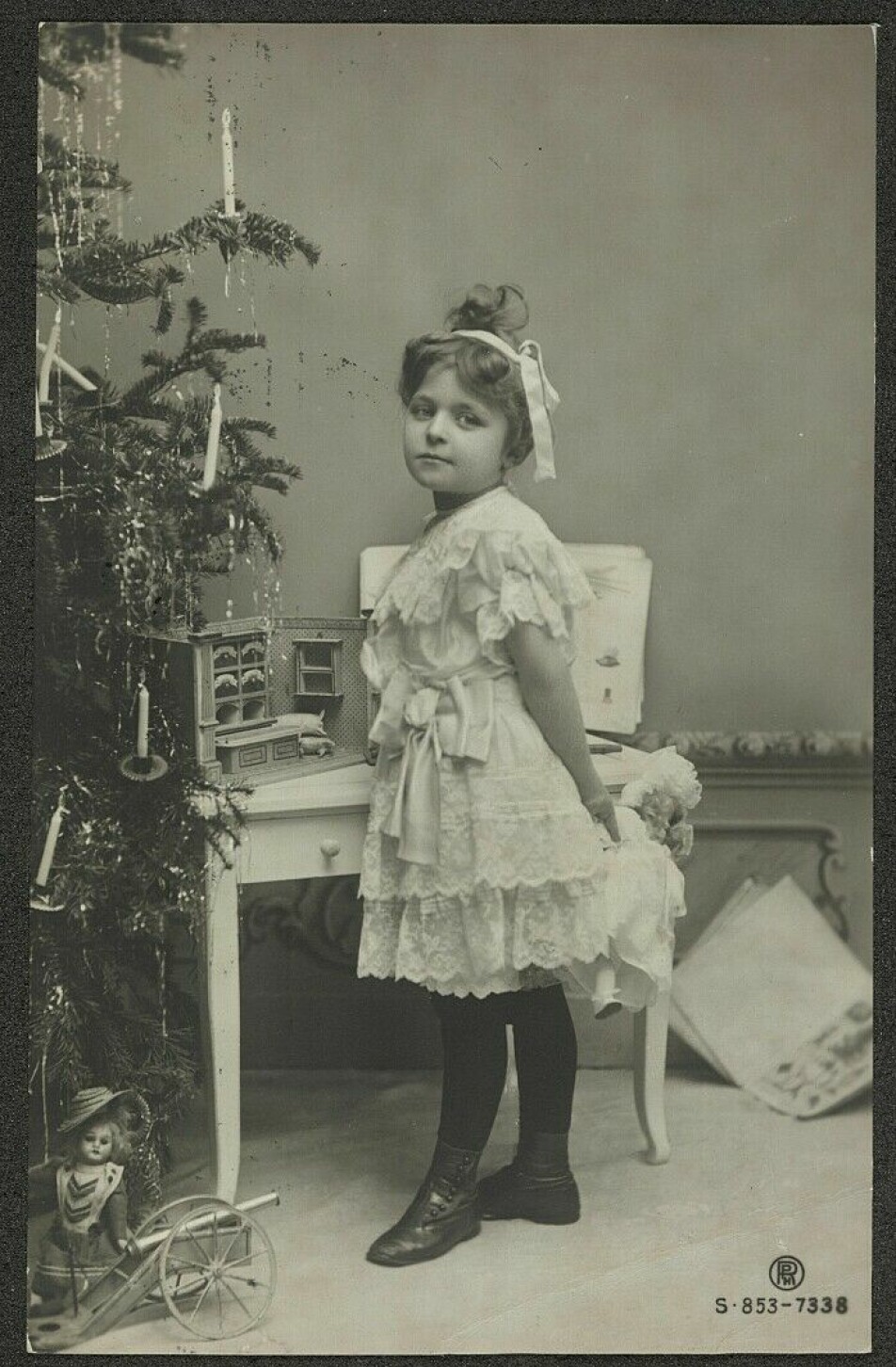
Golden age for Norwegian illustrators
Eventually however, Norwegian Christmas cards took over the market. From 1920 until 1960 there were around 100 different illustrators who made Christmas cards, according to the research librarian.
This resulted in a rich variety of motifs.
One popular image was children preparing for Christmas.
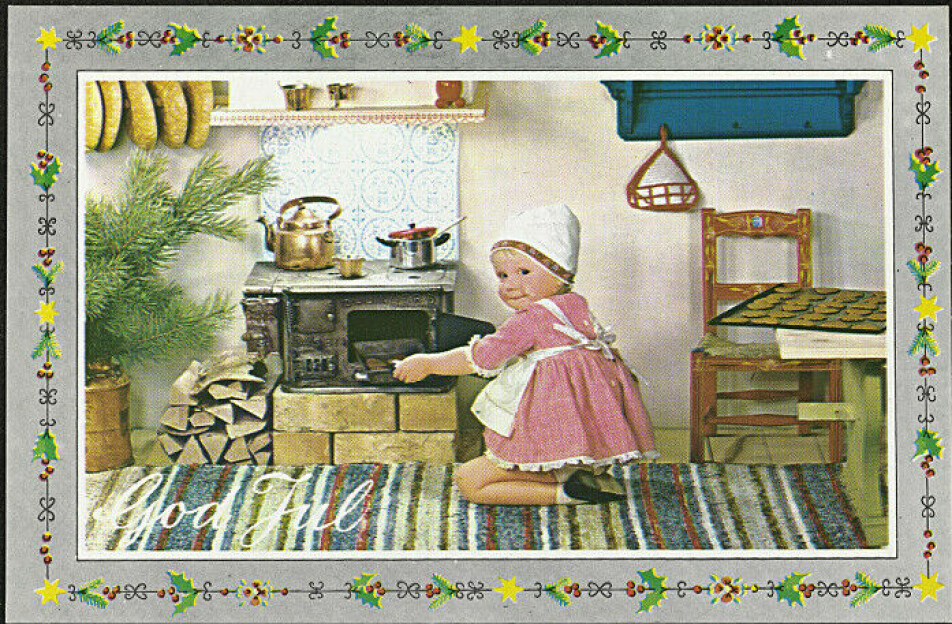
“A large group of these illustrators used children in their motifs. The cards were very sweet and cosy, of children who bake Christmas cakes, or children who take a peek at the Christmas tree,” Tangvald says.
National romance was also popular. This could be images of people wearing the Norwegian folk costume bunad, snow covered landscapes or red breasted bullfinches eating from a festive bird feeder.
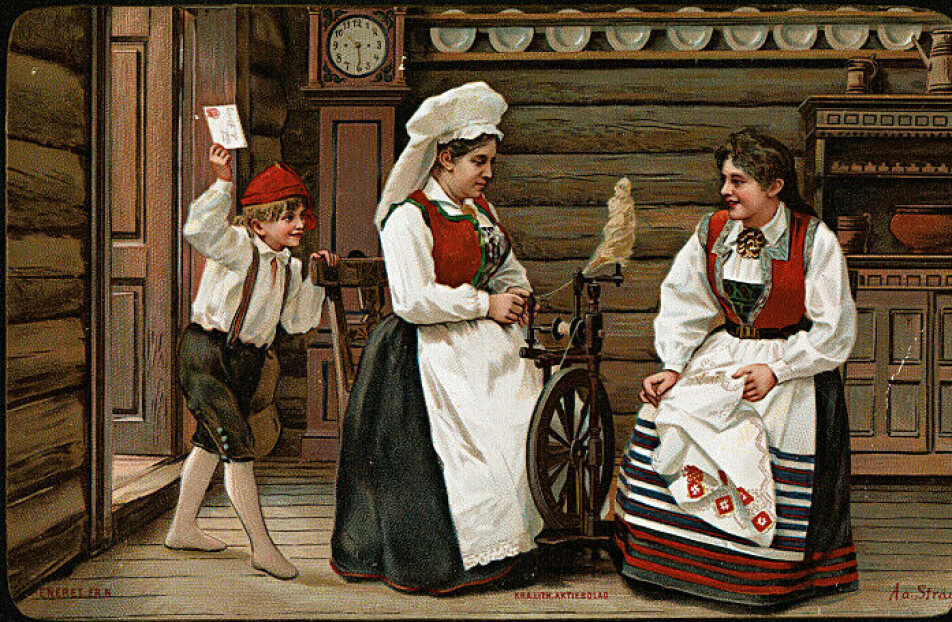
Red hats as a political message
Some Christmas cards were loaded with political symbolism.
This trend became particularly apparent during the second world war. The Germans prohibited the red hats characteristic of the Christmas gnomes because they became a symbol of Norwegian resistance.
From these years there are Christmas cards with Christmas gnomes wearing hats in other colours, for instance green. One Christmas card shows a crow stealing the red hat of a Christmas gnome. The crow symbolizes the Germans.
The famous Norwegian children’s books author Thorbjørn Egner also made politically loaded Christmas cards during the war. One of them is an image of a bald Christmas gnome who is scratching his head, clearly looking for his hat.
Even photographs of churches in snow covered landscapes could have symbolic political value.
“It wasn’t easy for the Germans to prohibit this, but for those who sent and received these cards, they were clear messages of the Norwegian church symbolizing a traditional Norwegian Christmas,” says Tangvald.
Less religion, lots of food
Apart from these church landscapes, there aren’t that many religious images to be found in the National Library archives.
“Christmas cards were more of a worldly thing in Norway. There are quite a few angels, but very little Jesus, Maria and Josef and those sorts of religious motifs,” Tangvald says.
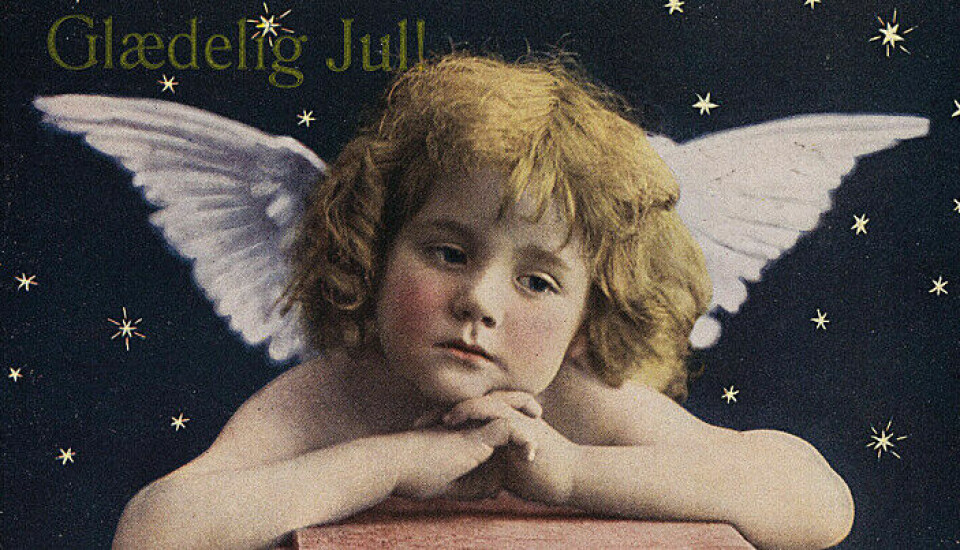
A very popular motif however is illustrations or photographs of a great feast.
“Food is very important in the Christmas cards. There are plenty of images of families or persons eating,” she says.
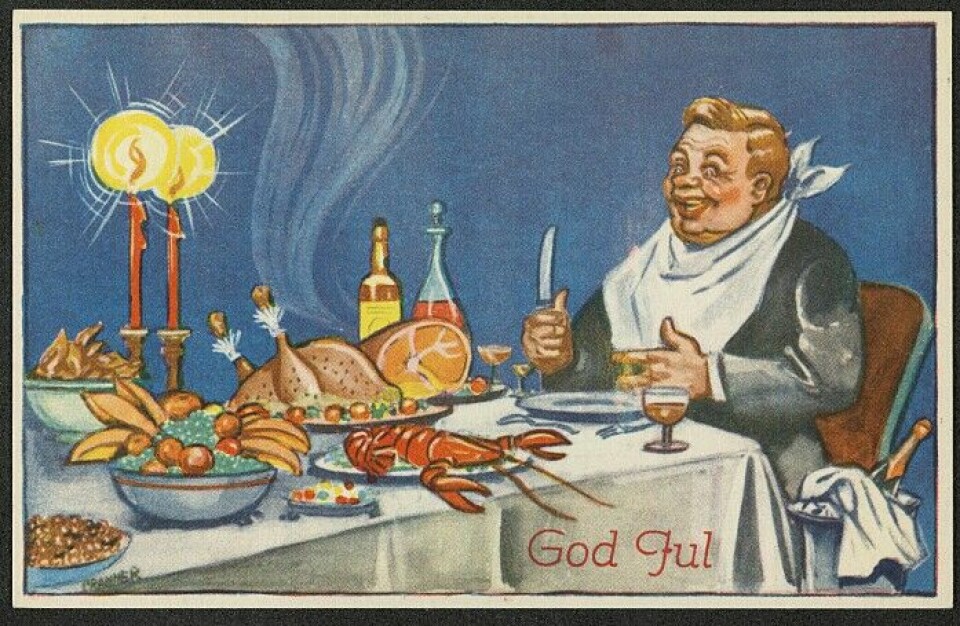
The cards with Christmas gnomes also featured food and drink. Both live pigs that are to become Christmas food as well as Christmas beer and aquavit were repeat motifs in these cards.
Alcohol also features in many of the old New Year’s Eve cards. During the golden age of the postcards at the beginning of the 20th century, people would send each other both Christmas cards and New Year’s Eve cards.
These cards often showed images of children, adults, angels and santas or gnomes cheering with champagne.
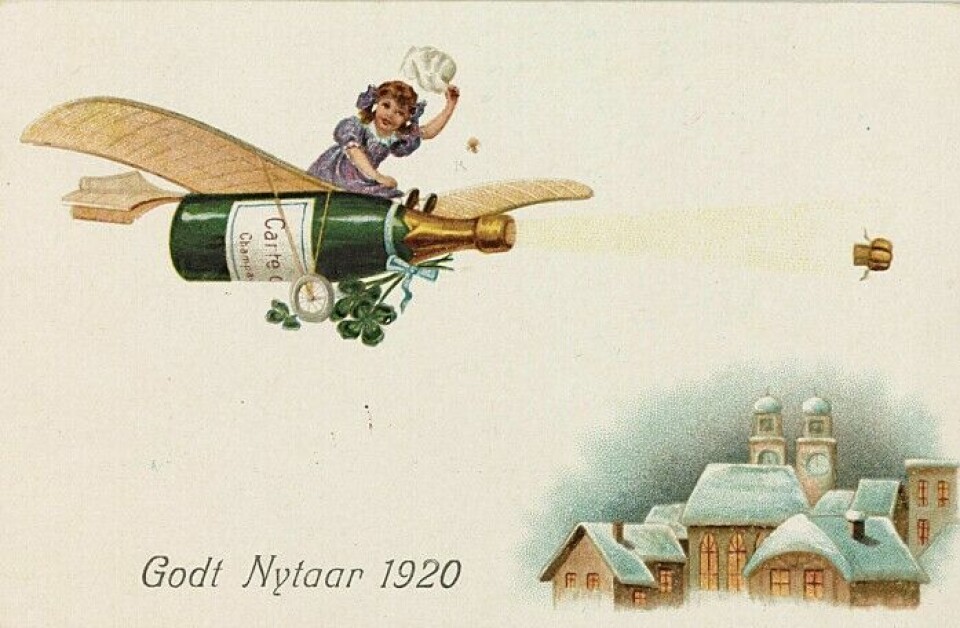
Still a popular item at the bookstore
Today there are several alternatives to the classical Christmas cards. Some send digital greetings; others send Christmas letters.
And many of those who swear to the Christmas card don’t buy them in the stores, rather they make photocards depicting their own children or family.
But even if the golden age of the Norwegian Christmas card illustrators is over, the tradition is alive and well, according to Tangvald.
“Just have a look at the Christmas card stands at the bookstore. The Norwegian illustrators are still there, but the market isn’t quite as big,” she says.
Translated by: Ida Irene Bergstrøm
———
Read the Norwegian version of this article on forskning.no
































